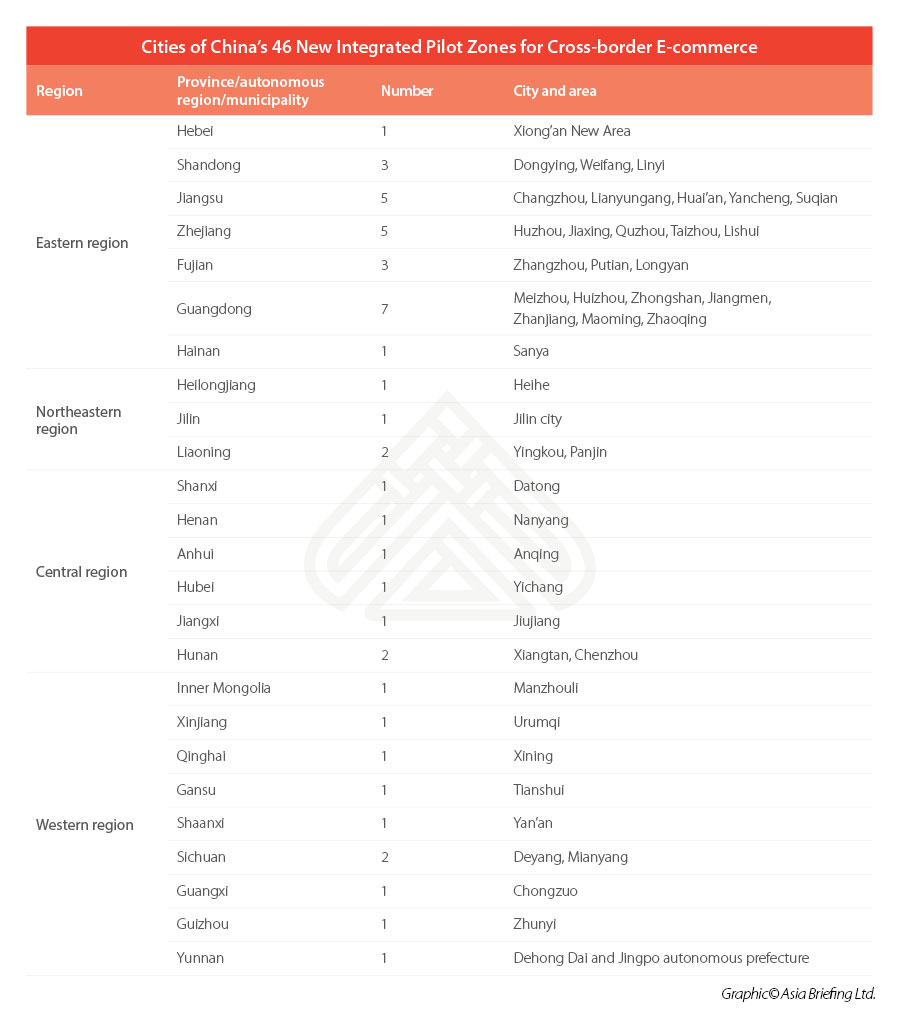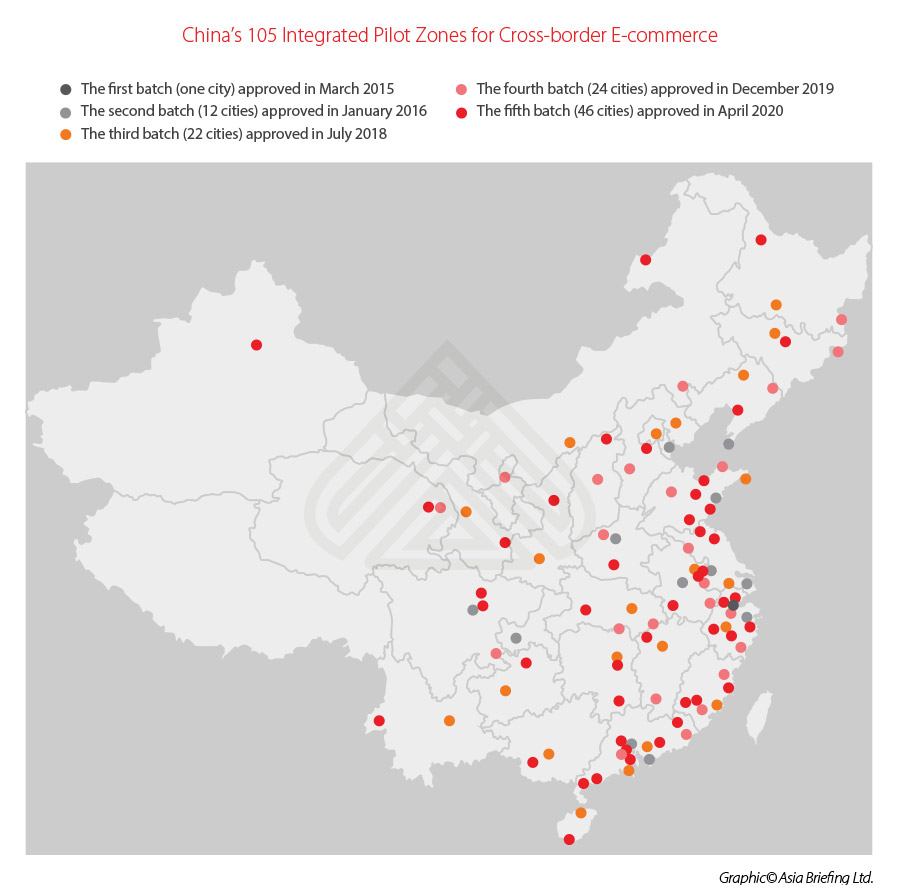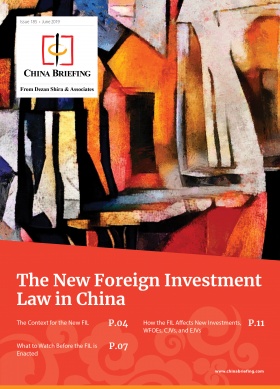46 New Cross-Border E-Commerce Zones Unveiled by China
On May 6, 2020, China’s State Council issued the Approval of the Establishment of Integrated Pilot Zones for Cross-border E-commerce in 46 Cities and Areas (Guo Han [2020] No.47). According to the document, Xiong’an New Area (Hebei province), Sanya (Hainan province), and 46 other cities will build up new cross-border e-commerce (CBEC) pilot zones, bringing the total to 105 such zones in China.
The new pilot zones will be constructed based on the experience and best practices adopted in existing pilot zones, and will promote high-quality development of the cross-border e-commerce (CBEC) industry and stabilize foreign trade and foreign investment amid the COVID-19 outbreak.
Enterprises can avail of preferential tax policies, such as exemption of value-added tax (VAT) and consumption tax on retail exports and reduction of corporate income tax (CIT) rates in CBEC pilot zones.
Besides, the document encourages relevant government departments to consider incorporating the cities of eligible zones into the pilot program on cross-border e-commerce retail imports and assist enterprises in jointly building and sharing overseas warehouses in these cities. CBEC retail import is the consumption activity of Chinese consumers purchasing goods from overseas through CBEC platforms. We explain more below.
Where are the 46 new cross-border e-commerce zones located?
The 46 cities and areas of the new CBEC zones are shown in the following table.
By far, China has approved five batches of 105 CBEC pilot zones since the first pilot zone was set up in Hangzhou in 2015. They cover 30 provinces, municipalities, and autonomous regions (only except for Tibet). Most CBEC pilot zones are located in the eastern regions of the country – including Beijing (1), Shanghai (1), Guangdong (13), Zhejiang (10), Jiangsu (10), Shandong (7), and Fujian province (6).
The new zones, however, expand into China’s midwestern region and beyond.
While the first two batches of 13 pilot zones were located mainly in large and medium-sized cities in the east, the third batch of zones began to expand to provincial capital cities in the central, western, and northeastern regions. The fourth and fifth batches included more second- and third-tier cities.
What preferential policies are applied in the CBEC pilot zones?
China has been rolling out a series of measures to support CBEC development. Among them are the major preferential policies we mention below.
Policies on VAT and consumption tax exemption
According to the Notice on Tax Collection Policies for Retail for Exports in CBEC Integrated Pilot Zones (Cai Shui [2018] No.103)(EN), where if the exports of an e-commerce export enterprise, which has not yet obtained a valid proof of purchase (a special input VAT fapiao), satisfies all the following criteria, the exports can still be exempted from VAT and consumption tax:
- The e-commerce export enterprise is registered in the CBEC zones, and has registered the date of exportation, description of goods, measurement unit, quantity, unit price, and amount on the CBEC online service platform at the place of registration;
- The e-commerce export declaration formalities are completed with the Customs at the locality of the pilot zone for the exports; and
- The exports do not fall under the scope of goods for which export tax refund (exemption) is expressly removed by the Ministry of Finance and the State Administration of Taxation.
Pilot scheme on assessment of CIT on retail export enterprises
According to the Announcement on Issues Concerning the Levy upon Assessment of Income Tax on Retail Export Enterprises in CBEC Pilot Zones (STA Announcement [2019] No.36)(EN), any CBEC enterprises in a pilot zone, which satisfies all the following criteria, shall be subject to the pilot scheme of assessment of CIT, where the taxable income rate can be lower at four percent:
- The enterprise is registered in the CBEC pilot zone and the date, name, unit of measurement, quantity, unit price, and amount of the exported goods are registered on the CBEC online service platform at the place of registration;
- The e-commerce export declaration formalities are completed with the Customs at the locality of the pilot zone for the exports; and
- There are no valid purchase vouchers for the exported goods, which are entitled to the policies of exemption from VAT and consumption tax.
In addition, if these CBEC enterprises meet the conditions for preferential policies for small low-profit enterprises, they may enjoy the preferential CIT policies for small low-profit enterprises.
If the income obtained by the CBEC enterprise is tax-free income specified in Article 26 of the Corporate Income Tax Law of China, it may enjoy the preferential policies for tax-free income.
Moreover, Guo Han [2020] No.47 encourages incorporating the cities of eligible zones into the pilot program on retail imports of CBEC. To clarify, CBEC retail imports are when consumers in China purchase goods from overseas through a CBEC third-party platform operator, which are then delivered to China via the “online purchase of bonded imports” (Customs regulatory method code 1210) or “direct purchase of imports” (Customs regulatory method code 9610).
The CBEC retail imports can be regulated as goods imported for personal use, and not subject to the license approval, registration, or filing requirements for the first-time importation of the goods, according to the Notice on Work Relating to Improved Regulation of Cross-border E-commerce Retail Imports (Shang Cai Fa [2018] No.486)(EN). Currently, China has 87 cities and areas joining the pilot program of retail imports of CBEC, including the whole Hainan island.
Moreover, the Guo Han [2020] No.47 has urged local governments to assist enterprises there to jointly build and share overseas warehouses – warehouses established in a foreign country for bulk storage of export goods and direct delivery to foreign consumers after the goods are sold via an online platform. To date, China’s in-zone e-commerce enterprises are reported to have jointly built up more than 1,200 overseas warehouses. These warehouses, which aggregate scattered international packages for bulk transportation, can greatly reduce logistics costs. It can also improve the overseas consumer shopping experience by delivering goods more quickly, safely, and accurately, besides handling sales returns more efficiently.
Besides these, the in-zone enterprises can also enjoy customs clearance facilitation and relaxation of import supervision.
How will CBEC stabilize foreign trade and investment in China?
China’s traditional foreign trade has been hit hard by the global spread of COVID-19, but CBEC businesses have continued to grow. They have provided a quick and convenient way for consumers to buy urgently needed products, including epidemic prevention materials.
WEBINAR
The ink on the Phase One trade deal was barely dry before a global pandemic broke out, find out how COVID-19 might affect the deal.
REGISTER TODAY
From January to February 2020, China’s import and export volume of CBEC retail was RMB 17.4 billion (US$2.45 billion), up 36.7 percent year-on-year. In 2019, the number reached RMB 186.2 billion (US$26.25 billion), five times that of 2015, with an average annual growth rate of 49.5 percent, according to the official data.
Region-wise, the import and export of CBEC in Shandong province reached RMB 740 million (US$104.34 million) in the first quarter, a year-on-year growth of 114.6 percent. In March, the import and export of CBEC in Guangxi province reached RMB 63.58 million (US$8.96 million), a year-on-year growth of 4.7 times.
To support their growth and stabilize foreign trade and investment, Chinese officials have determined to attach more significance to CBEC development. The roll-out of the fifth, that is, the latest batch of CBEC pilot zones took no more than five months.
In the last six years, the proportion of China’s CBEC exports in the country’s total foreign trade jumped from 2.2 percent to 11.25 percent. In 2019, China sent more than 300 million parcels to the world, with the top five countries being – the US (29.29 percent), France (6.42 percent), Russia (6.10 percent), the UK (5.55 percent), and Germany (4.59 percent), according to Yiou, a market research company.
As a new form of business in the development of foreign trade, cross-border e-commerce is expected to play an even more important role in stabilizing the China’s export trade in light of recent trade frictions or even decoupling from the US. It will additionally enable the inclusion of more small and micro enterprises to engage in international trade. CBEC may soon become a key facilitator of consumption growth as the world, including China, confronts a prolonged pandemic in COVID-19.
About Us
China Briefing is written and produced by Dezan Shira & Associates. The practice assists foreign investors into China and has done so since 1992 through offices in Beijing, Tianjin, Dalian, Qingdao, Shanghai, Hangzhou, Ningbo, Suzhou, Guangzhou, Dongguan, Zhongshan, Shenzhen, and Hong Kong. Please contact the firm for assistance in China at china@dezshira.com.
We also maintain offices assisting foreign investors in Vietnam, Indonesia, Singapore, The Philippines, Malaysia, Thailand, United States, and Italy, in addition to our practices in India and Russia and our trade research facilities along the Belt & Road Initiative.
- Previous Article China Releases Follow-Up Tariff Exclusion List for US$60bn Worth US Imports
- Next Article How to Determine Your Foreign Employees’ IIT Liability in China: COVID-19 Travel Ban Series









